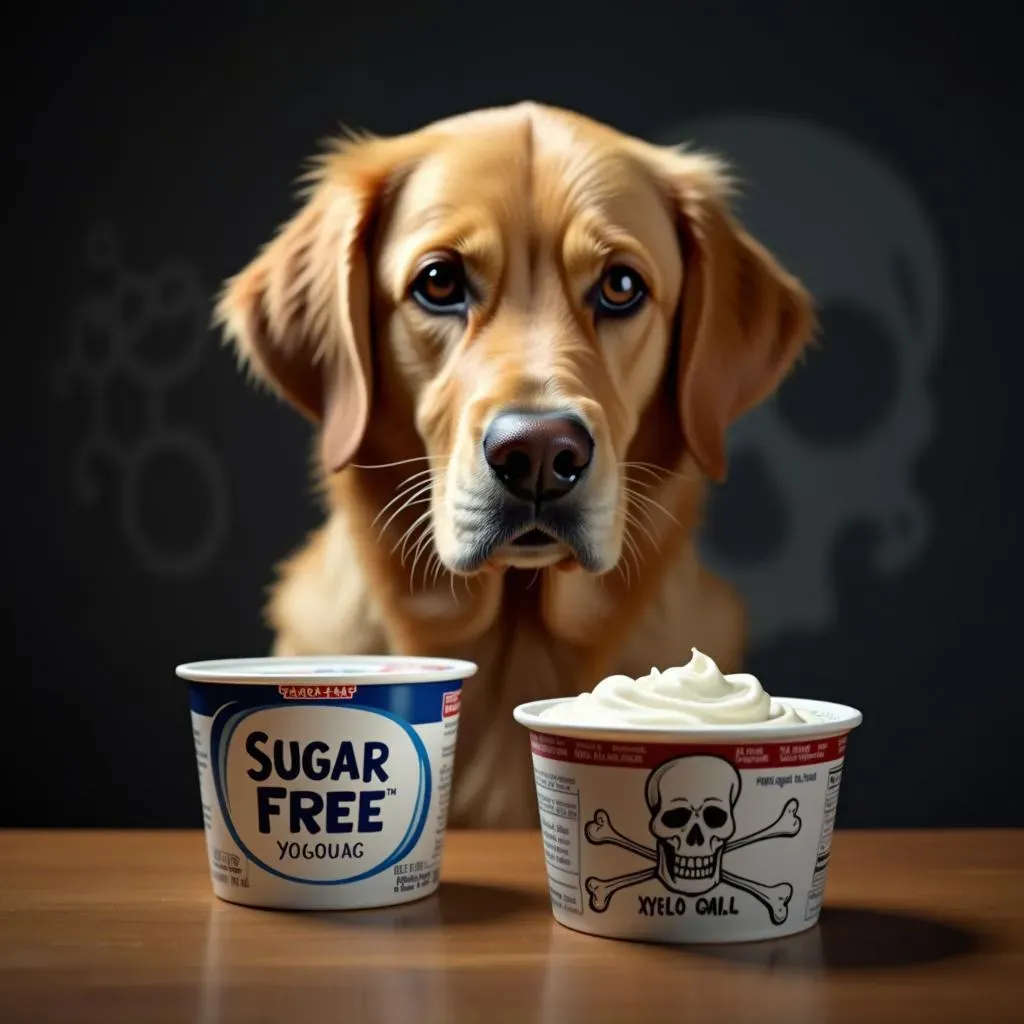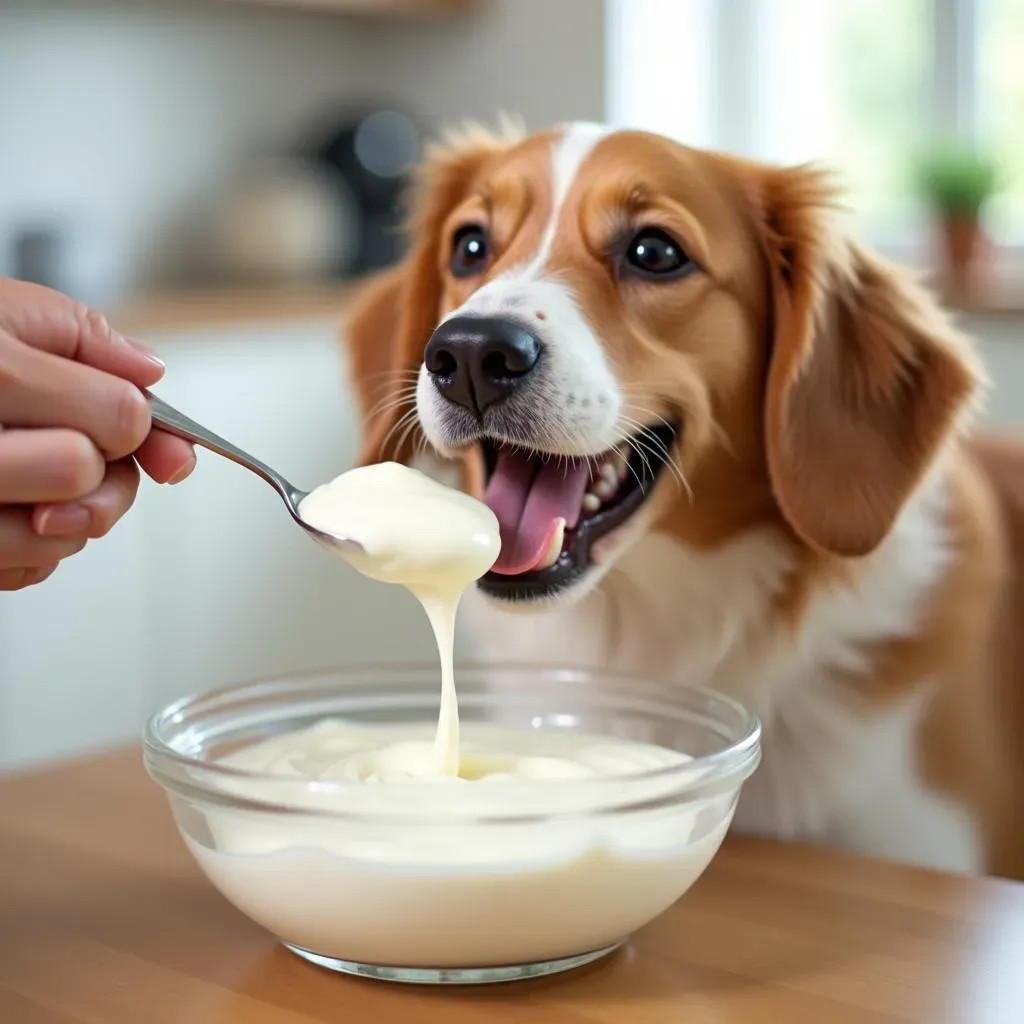Table of Contents
Thinking about sharing your yogurt with your furry pal? You're not alone! Many dog owners wonder, "Is low fat yogurt good for dogs?" The answer is a bit nuanced, but generally, plain, low-fat yogurt can be a healthy treat for your canine companion. It's packed with probiotics, which can aid digestion, and it's a good source of calcium. However, not all yogurts are created equal, and some can be downright harmful to dogs. This article will guide you through the do's and don'ts of feeding yogurt to your dog. We'll explore the benefits of probiotics and calcium, discuss appropriate serving sizes, and, most importantly, highlight the dangerous ingredients to watch out for, like xylitol and excessive sugar. We'll also touch on lactose intolerance in dogs and how to recognize the signs. So, before you offer your pup a spoonful, let's dive into the world of yogurt and ensure you're making a safe and informed choice for your four-legged friend.
The Benefits of Low Fat Yogurt for Dogs: Probiotics and More

The Benefits of Low Fat Yogurt for Dogs: Probiotics and More
Why Probiotics Are Paw-some
You know how everyone's talking about probiotics these days? Well, they're not just for humans! Dogs can benefit from them too, and low-fat yogurt is a surprisingly good source. Probiotics are essentially beneficial bacteria that live in the gut and aid in digestion. They help break down food, absorb nutrients, and even boost the immune system. Think of them as tiny superheroes fighting off the bad guys in your dog's tummy. When your dog's gut flora is balanced, they're less likely to experience digestive issues like diarrhea or constipation. It's like giving their digestive system a little tune-up!
And it's not just about digestion. A healthy gut can also lead to better overall health. Studies have shown that probiotics can help reduce inflammation, alleviate allergies, and even improve mood. So, by adding a little low-fat yogurt to your dog's diet, you're not just helping their tummy; you're potentially boosting their overall well-being. Just imagine a happier, healthier, and less gassy pup – who wouldn't want that?
Probiotic Benefit | How It Helps Your Dog |
|---|---|
Improved Digestion | Reduces diarrhea and constipation |
Boosted Immunity | Helps fight off infections |
Reduced Inflammation | Alleviates allergy symptoms |
Calcium: Building Strong Bones and More
Beyond the probiotic power, low-fat yogurt also offers a good dose of calcium, which is essential for maintaining strong bones and teeth. This is especially important for puppies who are still growing and developing, but adult dogs need calcium too to keep their skeletal system in tip-top shape. Calcium also plays a role in muscle function and nerve transmission, so it's not just about bones!
However, it's worth noting that dogs need a balanced diet to properly absorb calcium. Yogurt alone isn't going to solve all their nutritional needs. It's more like a helpful supplement that can contribute to their overall calcium intake. And of course, moderation is key. Too much calcium can actually be harmful, especially for large-breed puppies. That's why it's always a good idea to chat with your vet before making any major changes to your dog's diet. They can help you determine the right amount of calcium for your dog's individual needs and ensure they're getting all the nutrients they need to thrive.
Serving Suggestions: How Much Low Fat Yogurt Can Dogs Eat?

Serving Suggestions: How Much Low Fat Yogurt Can Dogs Eat?
The Golden Rule: Moderation is Key
Alright, so you're convinced that low-fat yogurt might be a good addition to your dog's diet. Awesome! But before you go dumping a whole container into their bowl, let's talk about serving sizes. Just like with any treat, moderation is absolutely key. Too much of a good thing can lead to digestive upset, and nobody wants a dog with a rumbling tummy and the runs. Think of yogurt as a supplement, not a meal replacement. A good starting point is to treat it as the 10% treat rule, which means treats should only make up 10% of their overall diet.
For small dogs, like Chihuahuas or Yorkies, a tablespoon or two is usually plenty. Medium-sized dogs, like Beagles or Cocker Spaniels, can handle a couple of tablespoons. And for larger breeds, like Labs or German Shepherds, you can go up to a quarter of a cup. But again, these are just general guidelines. You really need to consider your dog's individual size, activity level, and overall health. When in doubt, start with a smaller amount and see how they react. It's always better to err on the side of caution. After all, you know your dog best!
Practical Tips for Serving Yogurt
so now you know how much yogurt to give your dog. But how do you actually serve it? Well, there are a few fun and easy ways to incorporate yogurt into their diet. You can simply mix it in with their regular kibble, which is a great way to add a little extra flavor and nutrition to their meal. Some dogs are picky eaters, and this can be a good way to entice them. You could also offer it as a standalone treat, especially on a hot day. A dollop of cold yogurt can be a refreshing and cooling snack. Or, if you're feeling creative, you can even freeze it into little yogurt pops. Just pour some yogurt into an ice cube tray and let it freeze. These are perfect for teething puppies or for a long-lasting treat on a warm afternoon.
But remember, presentation matters! Make sure the yogurt is served in a clean bowl, and always supervise your dog while they're eating it. You don't want them to gulp it down too quickly or make a mess. And of course, always have fresh water available. Yogurt is a dairy product, and some dogs may need a little extra hydration after eating it. With a little bit of planning and creativity, you can make yogurt a fun and healthy part of your dog's diet. Just remember to keep it moderate, keep it plain, and keep an eye on your pup's reaction. Happy snacking!
Serving Method | Benefits | Considerations |
|---|---|---|
Mixed with Kibble | Adds flavor and nutrition to meals | May not be suitable for picky eaters |
Standalone Treat | Refreshing and cooling snack | Supervise to prevent gulping |
Frozen Yogurt Pops | Long-lasting treat, good for teething | Can be messy, serve outdoors |
Ingredient Alert: When Low Fat Yogurt Is Bad for Dogs

Ingredient Alert: When Low Fat Yogurt Is Bad for Dogs
The Xylitol Nightmare
folks, listen up! This is where things get serious. While plain, low-fat yogurt can be a tasty treat for your pup, certain ingredients can turn it into a toxic time bomb. The biggest offender? Xylitol. This artificial sweetener is a complete no-no for dogs. Even a tiny amount can cause a rapid drop in blood sugar, leading to seizures, liver failure, and even death. Seriously, it's that dangerous. Xylitol is often found in sugar-free yogurts, so you absolutely must read the ingredient label before offering any to your furry friend. Don't just glance at it – scrutinize it! Make sure xylitol is nowhere to be found. It's not worth the risk, no matter how much your dog begs with those puppy-dog eyes.
Remember, manufacturers can change their formulas, so always double-check the label, even if you've bought the same yogurt before. It's better to be safe than sorry. If you're ever in doubt, just skip it and choose a plain, unsweetened option. There are plenty of safe and healthy treats out there, so there's no need to gamble with your dog's life. And if you suspect your dog has ingested xylitol, rush them to the vet immediately. Time is of the essence in these situations. Xylitol is a silent killer, so stay vigilant and protect your pup!
Sugar, Chocolate, and Other Sneaky Culprits
Xylitol isn't the only ingredient to watch out for. Excessive sugar is also a concern. While it's not as immediately toxic as xylitol, too much sugar can lead to weight gain, dental problems, and even diabetes in dogs. Flavored yogurts are often loaded with sugar, so stick to plain, unsweetened varieties. And speaking of flavors, chocolate yogurt is a definite no-no. Chocolate is poisonous to dogs and can cause a range of symptoms, from vomiting and diarrhea to seizures and death. The darker the chocolate, the more toxic it is. So, steer clear of anything chocolate-flavored, no matter how tempting it may seem.
Besides xylitol, sugar, and chocolate, there are other sneaky ingredients that can be harmful to dogs. Artificial flavors, colors, and preservatives can cause allergic reactions or digestive upset. Some yogurts also contain nuts or seeds, which can be dangerous for dogs with allergies. And certain spices, like nutmeg, can be toxic in large quantities. The bottom line? Always read the ingredient label carefully and avoid anything that seems questionable. When in doubt, choose a plain, unsweetened yogurt with minimal ingredients. Your dog will thank you for it!
Harmful Ingredient | Potential Risks |
|---|---|
Xylitol | Rapid drop in blood sugar, seizures, liver failure, death |
Excessive Sugar | Weight gain, dental problems, diabetes |
Chocolate | Vomiting, diarrhea, seizures, death |
Artificial Flavors/Colors | Allergic reactions, digestive upset |
Lactose Intolerance in Dogs: Is Low Fat Yogurt a Safe Choice?

Lactose Intolerance in Dogs: Is Low Fat Yogurt a Safe Choice?
Understanding Lactose Intolerance in Canines
So, here's the deal: just like some humans, many dogs are lactose intolerant to some degree. This means they have trouble digesting lactose, the sugar found in milk and other dairy products. Puppies produce an enzyme called lactase, which helps them break down lactose in their mother's milk. However, as they grow older, many dogs produce less lactase, making it harder for them to digest dairy. This can lead to a range of unpleasant symptoms, from mild gas and bloating to full-blown diarrhea and vomiting. Not fun for anyone involved!
But don't despair just yet! The good news is that not all dogs are equally lactose intolerant. Some can tolerate small amounts of dairy without any problems, while others are more sensitive. And the level of lactose in yogurt is generally lower than in milk, thanks to the fermentation process. This is why some dogs can handle yogurt even if they can't tolerate milk. However, it's still important to be aware of the potential for lactose intolerance and to watch out for any signs of digestive upset after feeding your dog yogurt.
Low Fat Yogurt and Lactose: A Balancing Act
so where does low-fat yogurt fit into all of this? Well, the "low-fat" part doesn't really affect the lactose content. What matters more is the type of yogurt and how it's made. Greek yogurt, for example, is often lower in lactose than regular yogurt because it's strained to remove some of the whey, which contains lactose. Plain, unsweetened yogurt also tends to be a better option than flavored varieties, as these often contain added milk solids that can increase the lactose content. It’s a game of minimizing the potential triggers.
Ultimately, the best way to determine if your dog can tolerate low-fat yogurt is to start with a small amount and see how they react. Watch out for any signs of lactose intolerance, such as gas, bloating, diarrhea, or vomiting. If your dog shows any of these symptoms, stop feeding them yogurt immediately and consult your vet. They may recommend a lactose-free diet or other strategies to manage your dog's digestive issues. Remember, your dog's health and comfort are always the top priority!
Symptom | Severity | Action |
|---|---|---|
Mild Gas | Mild | Reduce Yogurt Amount |
Bloating | Moderate | Monitor Closely |
Diarrhea | Severe | Stop Yogurt & Consult Vet |
Vomiting | Severe | Stop Yogurt & Consult Vet |
The Final Scoop: Low Fat Yogurt for Dogs in Moderation
So, can your dog enjoy low fat yogurt? The answer is a cautious yes. When choosing yogurt for your dog, always opt for plain, low-fat varieties to reap the probiotic and calcium benefits without the harmful additives. Keep portion sizes small, and always introduce yogurt gradually to monitor for any signs of lactose intolerance. Most importantly, meticulously check ingredient labels to ensure the absence of xylitol or other toxic substances. When in doubt, a quick chat with your vet can provide personalized advice tailored to your dog's specific needs and health conditions. By following these guidelines, you can safely share this tasty treat with your furry friend, contributing to their overall well-being.
